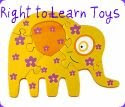image by sergio_recabarren
Today's parents feel pressured to use technology to begin their child's education in utero. For example, the BabyPlus Prenatal Education System promises to "give your baby a headstart" by playing rhythmic patterns to help stimulate early learning. It is time, therefore, to step back and evaluate the true value of toys that incorporate technology to teach.
Toys that are formed from high-tech electronics embedded with semiconductor chips are generally known as edutainment toys. The quality and substance of their play may be limited by the number of buttons a child can push. Some promise to challenge a child by allowing him or her to interact with the educational content to learn it. For example, V.Smile offers a Baby Infant Development System aimed at introducing interactive learning to kids 9 months to 3 years. They can watch educational videos with this system or push buttons on a tray to influence what is happening on a television screen.
Some older toys are also adding electronic bells and whistles to appeal to the current technologically sophisticated generation of children. Dolls now interact with the Internet. Wooden Brio trains make electronic sounds and can be controlled by infrared remotes. The classic Fisher-Price Rock-A-Stack now also comes in a Dance Baby Dance version whose center rod lights up and plays songs when the rings are stacked on it.
Open vs. Closed-ended Toys
An open-ended toy encourages free play with an unlimited number of outcomes. For example, a building set can be used to construct a variety of different structures. A closed-ended toy, on the other hand, has a limited and often soon exhausted number of outcomes.
Not all closed-ended toys are bad. After all, a stacker is a classic closed-ended educational toy: it can only be put together correctly in one way. However, to solve a stacker, a child must develop and use logic and fine motor skills. The child benefits from the repetition of playing with the pieces of a stacker, manipulating them with his or her fingers over and over and thinking about how they fit together until the solution is mastered and then repeated for pleasure.
A closed-ended edutainment toy, on the other hand, may only require a child to press a few buttons. Eventually, it leads to a dead end and the child grows bored and tosses the toy aside. As Martha B. Bronson notes in The Right Stuff for Children Birth to Eight, although a child can have a rich play experience with any toy, basic, open-ended toys encourage this type of experience more than rigidly programmed toys with only one or two functions do. This sort of edutainment toy is not timeless. It is meant to be replaced sooner rather than later by the next big product in edutainment that uses the latest in technological innovations.
Often people assume that toys that use new technology are more innovative and educational than non-technological educational toys. In fact, childhood specialists such as Jane Roberts (president of Young Media Australia, a consumer advocacy group), question how educational and interactive high-tech edutainment toys really are, noting that "[p]ressing buttons and having items do things for you is fairly limiting in terms of how children learn." Furthermore, many traditional toys are themselves becoming more innovative about stimulating a child's imagination and creativity without having electronics in them. For example, the blocks in FoxMind's Cliko game can be used for a variety of games that are challenging to children and adults alike.
Negative Impacts of Edutainment Toys
Overall, parents might not want to encourage children, especially younger ones, to use too often edutainment toys that involve televisions and computer screens. The authors of "Effects of Preschool Television Watching on First-Grade Children," found that preschoolers who watched more television than their peers did worse in school and were not as well socialized when they entered first grade. Researchers Frederick Zimmerman and Dr. Dimitri Christakis found that babies watching Baby Einstein DVDs and videos scored lower on language skills than babies who had never watched them at all.
In addition, Allison Sloan notes in Shopper's Guide to Healthier, Greener Toys that computers and television sets emit EMFs, "invisible forcefields whose possible health effects, from headaches to sleep disruption to cancer, are the subject of heated debate." Children's developing brains are in the greatest danger from such outside influences.
A final caution about edutainment toys is that they can foster in children an acceptance of a disposable consumer culture. A timeless toy such as a set of wooden unit blocks will hold up under heavy use for generations and can be played with at the same time by children (and adults!) of a variety of ages. Edutainment toys, on the other hand, are usually played with by only one child at a time, and they generally have a shorter playtime and life span. Children quickly master and get bored of them, or their high-tech components break, rendering the toy useless, and then they are discarded, releasing toxic chemicals and metals into the environment.
What Parents Can Do
As technology and the Internet permeate society and people's lives more and more, it does make sense to introduce children to computers and other inventions that they will need to use as they grow older. A toy is not necessarily bad or useless because it incorporates technology. That said, smart parents should examine the stated purpose of an edutainment toy, evaluate how and what it teaches, and determine if their children could receive equal or greater value from a simpler, classic toy. Roberts warns against the dangers of a parent using high-tech toys as babysitters, substituting interaction with a machine such as a single-player computer game for what should be "the best learning for young children-real-life experience when they model, create, explore, and develop their own initiatives through play."
For more resources on quality educational toys visit Kids Toy Club.
Article Source: http://EzineArticles.com/?expert=Laeke_Gebre






0 comments
Post a Comment